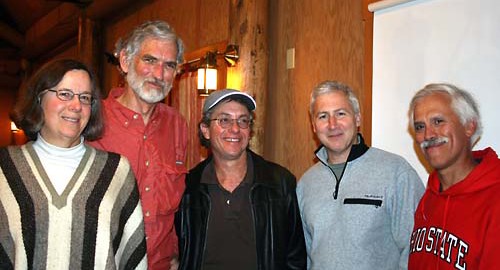Did Hans Nelson have an active role?
I don’t think I saw him up there at that time. The submarine crew would take a day or two off during our time for measuring trends on the lake. At that point we would move the pontoon boat over from a central data processing area (with computers and all the navigational aids we needed to follow the sub around the lake) to our trend boat to do our sampling. This would happen only those two days, because every other day the sub was in action. Some NPS people would work six or seven days a week; they wouldn’t take a day off. I made more money those summers in overtime than I made in regular time. We would go out at night, getting back at 2 a.m. after starting at seven in the morning. I’d get something to eat and be back out on the lake be eight o’clock and work until midnight. We could easily do a 16 hour day on the lake. Oceanographers are used to ship time. You have a ship on the ocean, you’re working day and night. You might have two crews working. We had one crew at work.
Several graduate students were out there. Jim McManus was one of them who got his Ph.D. in work involving Crater Lake. He would want to do some research, such as mapping the bottom of the lake. You can’t do that when the sub is in the water. The research boat has to be in communication, which means directly overhead so our underwater phones could talk to each other. When the sub was put away, the other research could happen-the other things that needed to be done. You couldn’t do that when the sub was in the water. The focus was on the sub for those dive days.
The money that came with it allowed a lot of things to happen at once?
The graduate students were probably being paid as research assistants. And they all had projects. The Ph.D. and the research assistants were all working together as one research team. There were thoughts thrown out that working on Crater Lake was more difficult then working on the ocean. On a ship you had every thing you needed, but on Wizard Island there were some things you had to call out for—getting them wasn’t simple. You had to go across the lake, then up the trail, drive around, and if you needed to go to Klamath Falls or Medford or Corvallis, holy mackerel. You are located a day or two away from getting anything if you found yourself short. Bob Collier’s wife, Pat, was instrumental in keeping the food in the right place at the right time. Coolers were running back and forth constantly. They were using House 19 as a food preparation place (21). The food would come down and you’d feed perhaps a dozen people down there. Navigators, managers for the sub, Park Service people, and all the research staff. We had quite a village down there on Wizard Island at that time.
The one thing I didn’t realize at first was that the sub was electrical . The batteries in the boat would be charged each shift. Sleeping by the boathouse would be difficult. They couldn’t shut it off at night. Some of us took zodiacs around the island to sleep in other coves. There aren’t many places where you can throw your sleeping bag out on Wizard Island. We would carry plywood and throw a piece of it out for a floor and I would put my tent and sleeping bag on a cot. I was comfortable there. You really had to think about putting a tent up on Wizard Island. I mean, what do you tie it to? Those were good times. I really enjoyed all of it.


